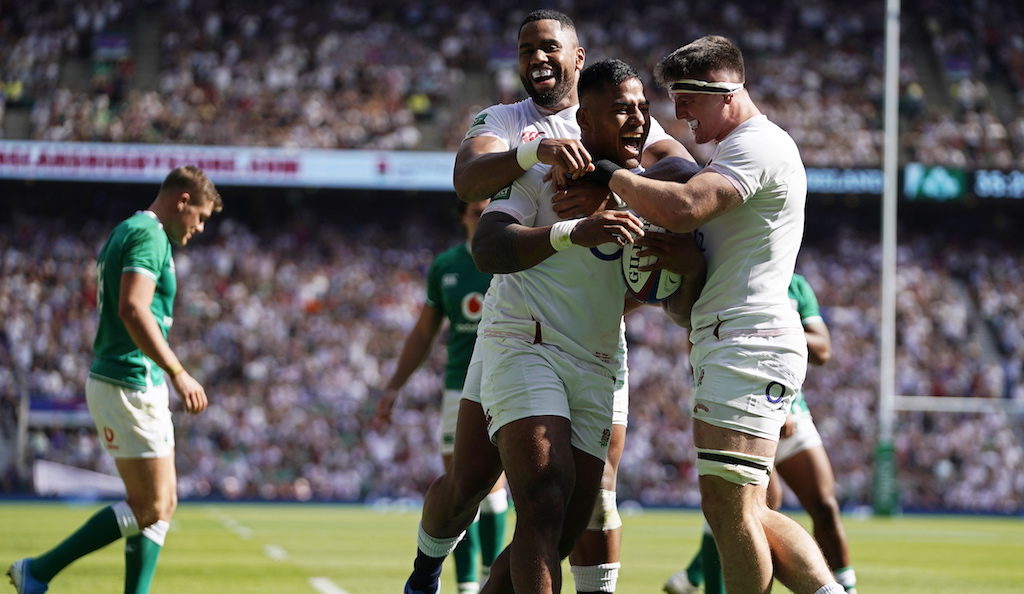Damian de Allende’s red-hot form might influence England coach Eddie Jones’ choice of midfield pairing for Saturday’s World Cup final against the Springboks, writes JOHN GOLIATH.
De Allende has arguably been the Springboks’ best player at the Rugby World Cup, turning out key performance after key performance during the business end of the tournament so far. He was immense in the quarter-finals against Japan with his work rate and explosive carrying, before having another blinder against Wales, which included a magnificent individual try.
ALSO READ: Will Bok ‘bomb squad’ alter Eddie Jones’ thinking
His work around the park has been impressive, and he is a key component in the Boks’ defensive structure. But it’s his work at the breakdown that has been a standout feature of his campaign with the Boks at the World Cup.
The Boks are always active at the breakdown, looking to disrupt or to counter-ruck to try to suck in more opposition players and give the scrumhalf scrappy ball from which to operate from. De Allende does this really well, as he uses his size and power to counter-ruck and, sometimes, fight for the ball on the ground.
But, while he has added those skills to his arsenal, his primary job is still to get the Boks on the front foot with ball in hand.
The South Africans kick the leather off the ball. The box kick is their biggest weapon, but sometimes they try and up the tempo in the opposition half. De Allende is their go-to man in this regard, especially from set-piece play, where he can run strongly into the vacuum to give the Boks momentum to bring their other big ball-carriers into the game.
De Allende normally targets that channel between the flyhalf and the inside centre or where there is a weakness in the opposition’s defence. Against Wales he attacked flyhalf Dan Biggar’s channel with a lot success.
In fact, Biggar was targeted by many of South Africa’s ball-carriers, with Sbu Nkosi also having a couple of darts from first-phase ball at the Wales No 10. One of those runs led to a penalty for the Boks, which Handre Pollard duly converted.
Biggar was forced to make eight tackles in the semi-final, the joint most in the Welsh team. He missed three of those tackles, including a crucial hit on De Allende, which led to the big Bok centre’s try in the second half.
ALSO READ: Rassie’s World Cup plan pays off
With the Boks unlikely to veer from their gameplan, and De Allende unlikely to stop taking the ball up like a machine down the middle, it will be interesting to see if England persist with George Ford and Owen Farrell at flyhalf and inside centre, respectively.
The combo worked a charm in the semi-final against the All Blacks, as they controlled the game with their kicking and playmaking abilities. They varied England’s point of attack with ball in hand and could put pressure on New Zealand’s back three with accurate kicking.
However, the duo aren’t the greatest defenders. They missed a combined eight tackles between them in the semi-final, with No 12 Farrell slipping off a hit no less than six times.
Farrell also has a history of having a terrible tackle technique. If there is one guy you want to run at with the hope of getting a penalty, or even a yellow or red card, it’s definitely the England captain.
The Boks will remember their last meeting with the English, when Farrell hit Andre Esterhuizen with the shoulder after the big Bok centre had a go down his channel. On that day Farrell got away with his no-arms tackle, but he may not be so lucky on Saturday.
Ford and Farrell were Jones’ preferred 10-12 combination early in the tournament, before he picked Farrell at flyhalf and Manu Tuilagi at inside centre to counter big Australian No 12 Samu Kerevi.
ALSO READ: Habana: Siya has been an inspiration
Moving Tuilagi, who partnered Farrell in the midfield against the All Blacks in the semis, back to No 12 will certainly increase their physicality in trying to contain De Allende, but, on the flip side, it will hinder England’s attacking threat, especially when it comes to outflanking the Boks’ infamous rush defence.
Both Ford and Farrell are wonderful distributors. Either one can take the ball flat before distributing to the other behind the backs of decoy runners. This gives them width to play with and brings their dangerous wingers into the game. This could be really effective in combating the Boks’ hard line on defence.
They did it brilliantly in the first two minutes against the All Blacks when they didn’t attempt a single kick and kept the ball in hand. The result was a fabulous try, which was made by their speed of play, and good hands by both backs and forwards.
The Boks, I suspect, won’t mind which combo they come up against. They don’t really have any selection worries ahead of the final. Their team is pretty much settled.
However, this is probably going to be Jones’ make-or-break selection ahead of his team announcement. Will he be going with creativity or power? We’ll find out on Thursday.
Photo: EPA/Will Oliver via BackpagePix





